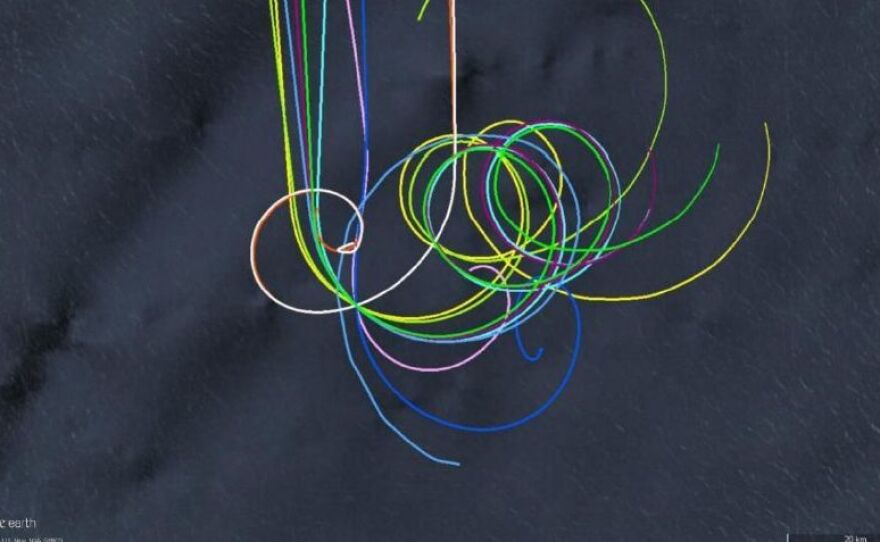
A report out this morning from Australian investigators offers a handful of new clues about the greatest aviation mystery of the 21st century: the disappearance of Malaysia Airlines Flight 370.
Based on a fresh satellite analysis and debris found on beaches along the African coast and several small islands, Australian investigators say they now believe the aircraft plunged rapidly into the southern Indian Ocean. The scenario might help answer questions about the plane's final minutes, but does little to explain its disappearance.
Flight 370 vanished in March 2014 during a routine flight from Kuala Lumpur to Beijing. It disappeared from air traffic control screens while over the South China Sea between Malaysia and Vietnam. Subsequent analysis of military radar and the aircraft's own satellite communication system suggest the plane might have turned west, then south. Ultimately, investigators believe it flew for several hours until its engines ran out of fuel over a remote stretch of ocean off the coast of Australia.
There remains no clear explanation for why the aircraft deviated from its course. Many families are deeply skeptical of the official account, and numerous conspiracy theories exist about the airplane's disappearance.
While investigators have determined that the initial deviation from the flight plan was "deliberate," it's still unclear whether the aircraft was under human control for the entire time it was in the air.
The new report cites two pieces of evidence suggesting that nobody was at the helm, at least in the flight's final moments.
First, a new analysis of the plane's satellite communications system, which investigators believe was activated when the aircraft ran out of fuel, suggests MH370 was descending at a rapid rate of speed in its final minutes.
Second are two pieces of the aircraft's wing, the right flaperon and outboard flap, which washed up on the French island of La Reunion and on the coast of Tanzania.
A French analysis of the wing fragments suggests that the aircraft's flaps were retracted at the time it broke apart. If the plane was making an emergency landing, the flaps would have been down.
Flaps are pieces of the wing that enable an aircraft to fly at a lower speed, such as during the landing process. They are also vital in an emergency, such as when airplanes must "ditch" in water. When an Airbus 320 made an emergency landing on the Hudson River in 2009, the National Transportation Safety Board cited the decision to lower flaps as a crucial reason the plane ditched safely.
The Australian report concludes:
- "The right outboard flap was most likely in the retracted position at the time it separated from the wing.
- "The right flaperon was probably at, or close to, the neutral position at the time it separated from the wing."
Although the report does not make conclusions about who may have been piloting the plane, its finding suggests the plane was not in a controlled descent.
Australian investigators believe the flaps and 20 other pieces of debris floated across the ocean from the crash site.
While the latest report provides one new piece of evidence, a definitive conclusion on the plane's fate is unlikely unless its wreckage can be found. For more than two years, ships have scoured the ocean floor where the plane could have come down.
They are expected to conclude their search early next year.
Copyright 2016 NPR. To see more, visit http://www.npr.org/.






